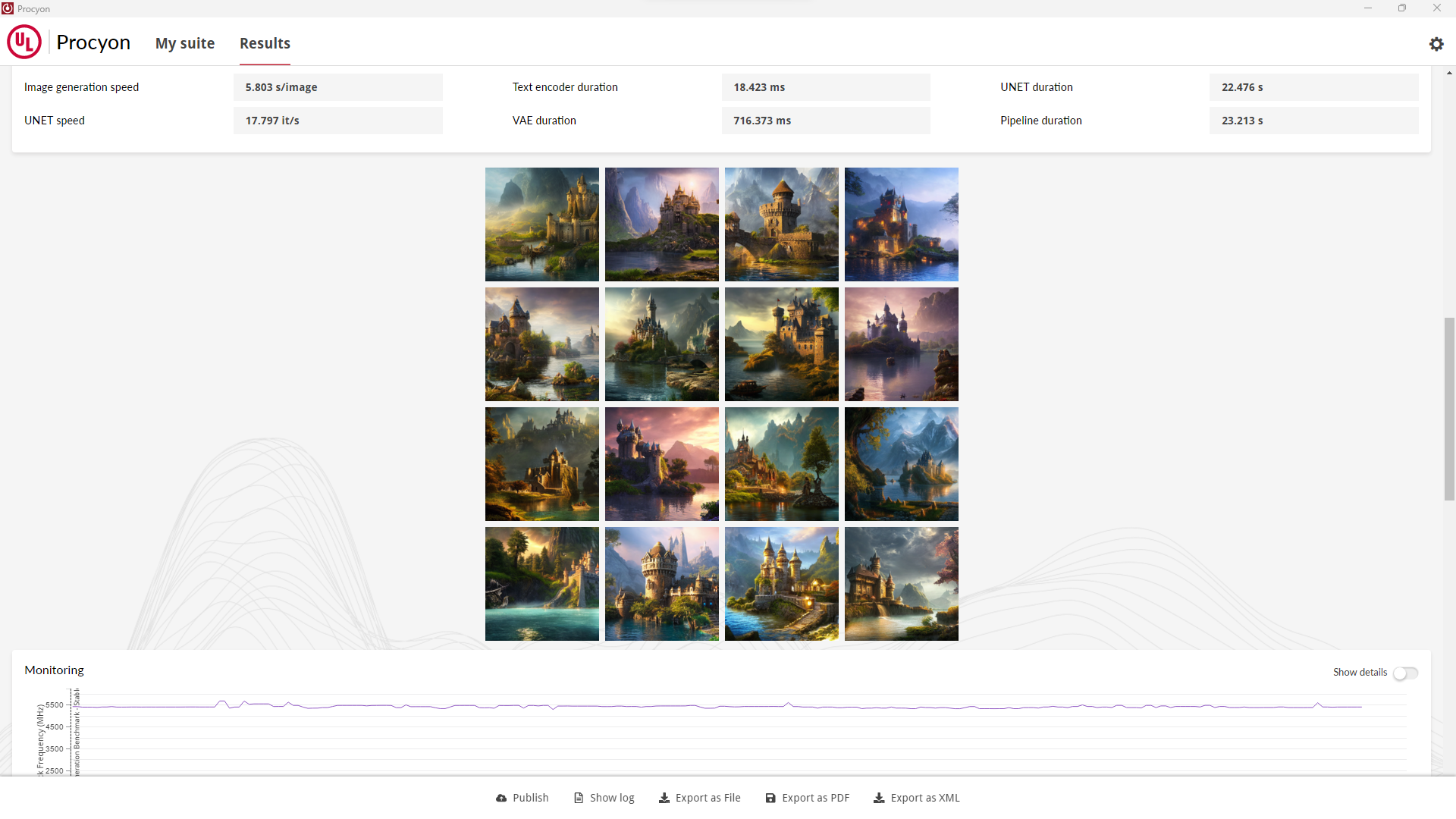
UL Solutions, the company behind 3DMark and PCMark, has unveiled its upcoming AI Image Generation benchmark for its Procyon AI-focused benchmark software. Based on Stable Diffusion, the benchmark seeks to test the AI performance of discrete graphics cards. While testing performance in Stable Diffusion wasn't impossible before, UL's new benchmark should make it much easier and more accessible for users wanting to know how fast their GPU is at AI image generation.
Launched in 2023, Procyon is UL's benchmark suit for AI tests, forming a trio with its gaming-centric 3DMark software and PC-focused PCMark app. There are lots users can do with AI, from powering chatbots to creating code that may or may not work. However, one curious benchmark that was missing from Procyon was for testing image generation, which is one of the most (if not the most) popular ways to use AI in recent years. In that light, it is a little strange that we are only now getting a standardized benchmark to test Stable Diffusion.
The upcoming AI Image Generation benchmark, which arrives on the 25th, seeks to fill that gap. It tests performance in Stable Diffusion based on two different models: one for midrange GPUs and the other for high-end ones. Technically, there's probably nothing stopping users from running this benchmark on weaker discrete GPUs and perhaps even integrated graphics, but the score would likely be quite low.
At the moment, Procyon's Stable Diffusion test offers three different engines: Intel OpenVINO, Nvidia TensorRT, and Microsoft's ONNX runtime using DirectML. There's no AMD-specific option here, though users should be able to test AMD hardware with DirectML. It's unclear whether AMD is leaving performance on the table by not offering its own engine, but Microsoft Olive has apparently boosted DirectML performance on AMD GPUs (and Intel's Arc cards, too).
While there's nothing stopping users from testing AI performance for themselves by using Stable Diffusion as normal, the Procyon AI Image Generation test has a big advantage in being a standard and providing a score that can be compared against other hardware. We benchmarked lots of GPUs in Stable Diffusion back in December, and it wasn't nearly as simple as a typical UL benchmark would have been.




!["[T]he First and Fifth Amendments Require ICE to Provide Information About the Whereabouts of a Detained Person"](https://images.inkl.com/s3/publisher/cover/212/reason-cover.png?w=600)


